Having fallen in the shadow of various leafy green vegetables such as spinach, dock and nettle, Atriplex has long been undeservedly neglected by gardeners and cooks. Atriplex is in fact one of the earliest plants known to man and it was given its due recognition as a healthy gift from nature thousands of years ago.
Few people today grow Atriplex to sell it in stores or markets because the plant is exceptionally delicate and has a short shelf life. Shortly after it's picked it's unfit for consumption. But this hasn't stopped casual gardeners from growing Atriplex in their own backyards, both as a food and as a decorative plant.
Atriplex belongs to the large family of plants Chenopodiaceae, which contains 100 genera with 1500 species. Atriplex (or saltbush, orache, orach) is a genus of annual grasses and subshrubs belonging to the Chenopodiaceae family. There are about 230 species in temperate zones. Garden orache is grown as a vegetable (for its leaves) or decorative plant.
There are 2 varieties of garden orach that are of interest - green and yellow. Many other varieties are used but only as decorative plants. Garden orache (Atriplex hortensis) is also known as red orach and mountain spinach, while Blitum bonus-henricus is known as Markery, Perennial Goosefoot and Good-King-Henry. Only the roots of the latter are eaten.
Atriplex hortensis is an annual plant. This green leaf vegetable with light purple tones has a straight, branching stem that grows up to 6.5 ft (2 m) tall. The leaves are triangular, entire or with slightly serrate edges, decorated in various ways - green-yellow, green, red, or of many colors. The leaves of the young offshoots are most often used for food, while the tops of the nodes and offshoots themselves are used sometimes too. They are used just like spinach leaves.
Growing Atriplex
Garden orache (Atriplex hortensis) is very easy to grow - it is not a picky plant and caring for it isn't a difficult job even for novice gardeners. Plant seeds out in the open, as early in the spring as possible, in stages - every 10-15 days, until the weather turns dry and hot. Seeding of Atriplex can continue until summer - July - August. Seeds need to be sown in early spring, March, without the need of growing them in plant beds beforehand. Atriplex prefers soil that's richly fertilized, light and high in water retention. Dig and even out the surface with a garden rake, then form furrows, about 15 3/4″ (40 cm) from one another.
Another option is to make a single, very long furrow near other vegetable cultures. In this case the Atriplex will also play the role of a screen, providing protection against the wind and the insect pests it carries. Atriplex stems, grown in rich soils, grows up to 6.5 ft (2 m) tall. You'll need about 1/2 cup (125 g) of seeds for 120 sq yards. When the plants develop 3-4 leaves, rearrange them so there's only 1 plant every 6″ (15 cm) or so.
From that point on, caring for them consists of regular mulching and watering. Water Atriplex if it's not raining because if it's drier, floral stems develop quickly, instead of fresh leaves. There are 2 ways to collect garden orache - cutting off the young plants once they grow 15 3/4″ (40 cm) tall and cutting the leaves off systematically, while leaving the plants to continue growing.
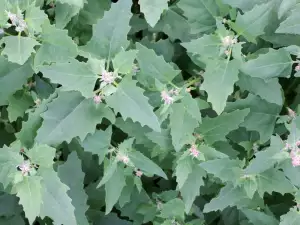
Composition of Atriplex
The richest sources of beta-Carotene are green leafy vegetables, such as nettle, dock, spinach, Atriplex and others. Here, nature has kept its secret by masking the beta-Carotene from the chlorophyll. Garden orache is rich in many minerals and is a good source of iron, zinc, calcium, magnesium, potassium. 3.5 oz (100 g) of Atriplex leaves contain 6.1 mg of manganese. Atriplex leaves are rich in vitamin C, vitamin P, proteins and mineral salts.
Choosing and Storing Atriplex
Choose fresh Atriplex leaves that show no signs of wilting or darkening. Atriplex is a highly perishable product, which is why merchants often avoid it. Atriplex leaves can be stored up to 2-3 days in a fridge; if you'd like to preserve them longer you have to sterilize and freeze them.
Culinary Use of Atriplex
Whenever you want to make something with Atriplex, the leaves need to have been freshly picked. When washed well they can be eaten as a fresh salad in combination with other leafy greens and spices. Atriplex can be used to make practically any dish you might be used to cooking with spinach. Atriplex makes delicious and healthy soups. It can be used as a garnish for meat or to wrap sarma, instead of using dock or cabbage leaves.
Colorful Porridge with Atriplex Recipe
Ingredients: 2 lb Atriplex, 7 oz bacon, 2/5 cup corn flour, salt, black pepper.
Preparation: Cut the bacon into small pieces and braise it in its own fat until reddened. Add some of the flour and stir briefly. Immediately after, add the finely chopped Atriplex and saute until softened. Salt to taste and pour hot water over it. Let it simmer on low heat for several minutes, then add the remaining flour that has been diluted with a little cold water. Leave the colorful porridge to boil for 5-6 min. Remove it from the stove and serve with a boiled egg and yoghurt if desired.
Benefits of Atriplex
The Byzantines described Garden orache as cold and moisturizing, with a throat and chest soothing action. For millennia the Greeks have known that Atriplex helps against hot liver, jaundice and dandruff. In traditional folk medicine, Atriplex is used as a treatment against certain stomach ailments. It has bactericidal properties. In folk medicine it's also used as an analgesic, sedative, anti-inflammatory, expectorant, laxative, anthelmintic and cholagogue substance.
The juice or infusion of Atriplex leaves is used to treat cavities. Even our great ancestors knew that Atriplex was an excellent remedy against toothache and gum diseases. They used it to keep their teeth strong, resilient, beautiful and white. They would give young children Atriplex seeds as a prophylactic against parasites.
If suffering from liver or spleen problems, it's recommended to make an infusion from the seeds and take 1/4 cup of it 4 times within 24 hours. Atriplex infusions are recommended for cough, it treats tuberculosis, inflamed gallbladder, duodenum ulcers, flatulence. Atriplex also improves and positively affects conditions of neurasthenia, hysteria and severe, long-term headaches. Atriplex was even used to treat paralysis in the past.
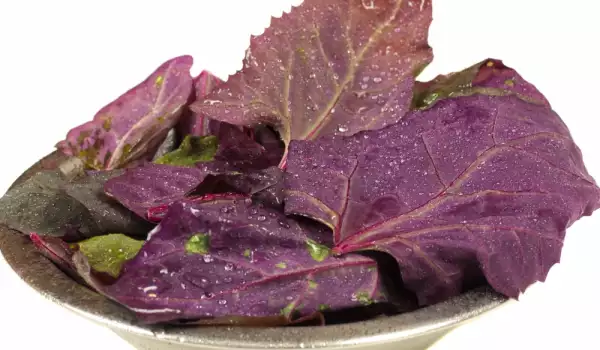
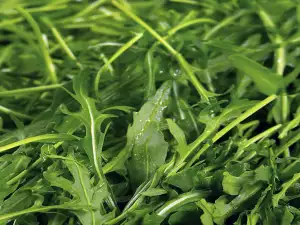
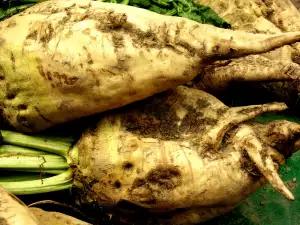



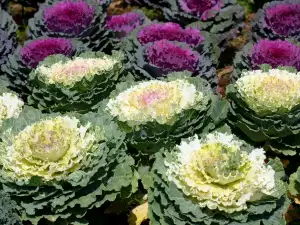

Comments